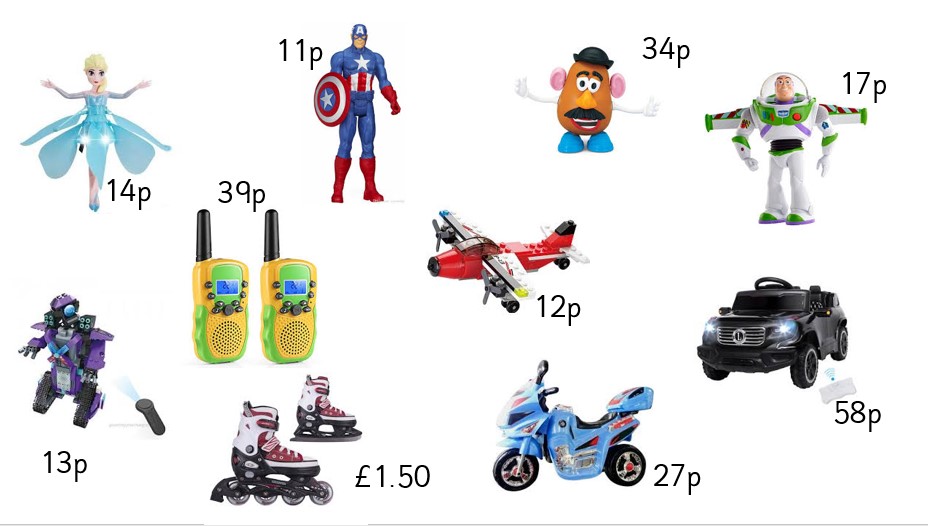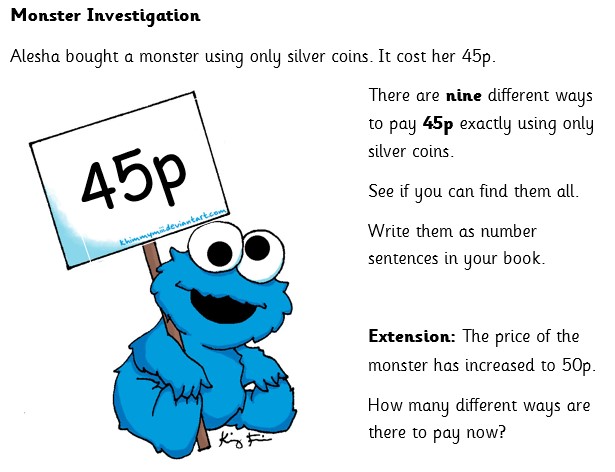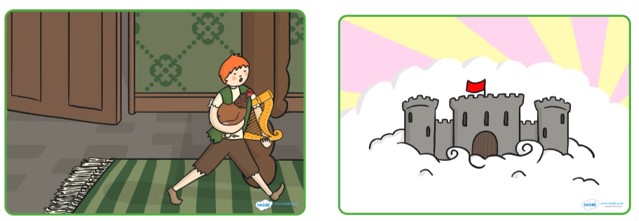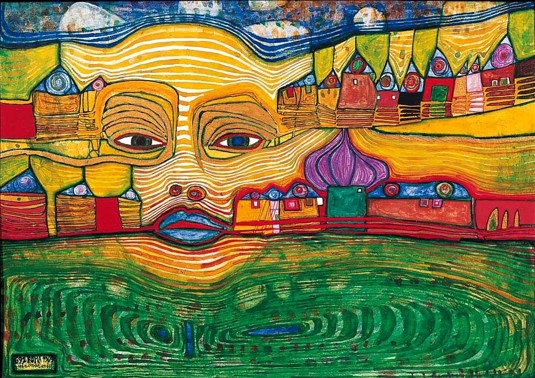Thank you again for sharing some of your work, it’s great to see how you’re getting on and lovely to see some of you in person! Here is the learning for Summer week 10, as usual we have allocated work to particular days for English and Maths. Hopefully this will avoid repetition of work and enable you to prepare children for the days they are in school.
Please email us if you have any questions.
l.thorn@wransom.herts.sch.uk
s.kholodenko@wransom.herts.sch.uk
a.morris@wransom.herts.sch.uk
Maths
Warm up each day by practising number facts.
Choose from: Bonds to 10/20; counting in steps of 2, 5 and 10; 2, 5 and 10 times tables, doubles and halves, odd or even and place value.
There are lots of games at https://www.topmarks.co.uk.
For a quick fire challenge try https://www.topmarks.co.uk/maths-games/hit-the-button.
There are also lots of songs to help learn number facts at https://www.bbc.co.uk/teach/supermovers/ks1-maths-collection/z6v4scw
Practise your skills using this week’s Flashback Powerpoint, with a series of quick questions covering topics we have learnt so far. Remember to view it in slideshow mode so you don’t see all the answers!
Maths Monday – Coins and notes
- Ask an adult for a selection of coins and notes (or look at the coin powerpoint below). Can you sort the coins into pence and pounds? What colour is each note?
- Draw round each coin (or do a rubbing) and write the value of each coin.
- Can you order the coins from the smallest value to the largest value?
- How many 50p coins in 1 pound?
- How many 10p coins in one pound?
- How many 2p coins in 20p?
- How many £1 coins in a £10 note?
- Practise writing the pound sign £.
- Now complete the worksheet below.
- Finally, complete the reasoning questions. Remember to explain your answers.
Maths Tuesday – Making exact amounts
- Work through the Counting in Coins powerpoint below.
- Now you are going shopping!
Select an item to buy from the Toy Shop (see below). How much does it cost? - Which coins could you use to make the amount? Write as an addition number sentence in your book.
Tips: Group coins into their value to help you count. Try to use the largest possible value coins. - Could you make the same amount using different coins?
Tip: You can draw out the coins to help you. - Once you are confident then move on to the reasoning questions below.

Maths Wednesday – Finding change using subtraction
- Today you are going to the toy shop again to buy a present.
Select a toy to buy from the powerpoint below. You go into the shop with either 10p, 20p or 30p. Work out the change the shopkeeper will give you. Write as a number sentence. There are 3 pages with 3 different prices. - Page 1 – items up to 10p. Find change from 10p. E.G. 10p – 3p = 7p
- Page 2 – items up to 20p. Find change from 20p. E.G. 20p – 9p = 11p
- Page 3 – items up to 25p. Find change from 30p. E.G. 30p – 15p = 15p
Tips: If the numbers are close together you can count the jumps up from the smaller number (finding the difference). If the numbers are far apart you can count the jumps back. You could use partitioning to find the answer, like we did last week. - When you are confident, try working out the change from 50p or £1.00.
Maths Thursday – 2 step calculations
- Today you are going to buy 2 items from the shop and work out how much change you will get. You can use the sheets from yesterday.
- First, choose the 2 items and add the amounts together. Write an addition number sentence to find the total (like you did on Tuesday).
- Then, work out your change. Write a subtraction number sentence (like we did on Wednesday).
E.G. 10p + 9p = 19p (Don’t forget your p for pence!)
20p – 19p = 1p change. - Start with 2 items up to 10p. Find change from 20p.
Then move on to 2 items up to 25p. Find change from 50p. - When you are feeling confident, you could buy 3 items and find change from £1.00.
Maths Friday – Monster investigation!
Today you are going to use the skills you have practised this week to solve this question. Write out the different addition number sentences. You can use actual coins to help you if you have some.

English – Monday
Phonics
Do you know the alternative spellings of the ‘ai’ sound? They are ‘ay’ and ‘a-e’. If you’re not sure about these alternative spellings, see if you can think of some words that are spelt with ‘ay’ and ‘a-e’ spellings before you start the activity.
Print out the sheet below or make your own version of it. You can play either by yourself or with a parent or sibling. Roll the dice and say the first word for that number. Colour it in and roll again. Keep rolling, reading and colouring until you’ve read and coloured in all the words on the board.
English – Character Profile
Listen to the audio version of Jack and the Beanstalk.
Talk about whether it was easy to imagine the characters, settings and events without having the pictures to look at. Were there any sound effects that added atmosphere? Did the narrator make the characters come to life by changing their voice?
Choose one of the characters from the story and draw a picture of him/her. Add some words around it to describe them.
Now listen to the story being read here:
Sometimes stories change slightly, depending on the version you read. Did the illustrations help you to better imagine the characters? What would you change or add to your picture?
Finally write a character profile for the character you chose. A character profile describes everything about that character. You should include how they look and what their personality is like.
English – Tuesday
Phonics – ai, ay or a-e?
Make 3 columns and put ‘ai’, ‘ay’ and ‘a-e’ at the top, one in each column. Ask an adult or sibling to read out the following words. Write each word under whichever you think is the correct spelling. Check to see if you got them all right at the end!
Pray, make, snail, pay, bake, crate, day, gate, hay, jail, late, may, nail, rake, sail, tape, wait
English
Do you know what kind of text Jack and the Beanstalk is? Is it fiction or non-fiction? Is it an adventure story or a poem? Is it a traditional tale or a report?
How do you know it is a traditional tale? What are the features of a traditional tale? Make a spider diagram of all the features of a traditional tale. Remember a spider diagram is where you put a topic in the middle and then you write your ideas around it and draw lines from the middle to your ideas. Think of as many as you can and then add these ones to your diagram if you didn’t quite think of them all.
- Characters are usually humans or animals.
- Characters are usually either ‘good’ or ‘bad’
- Repeated phrases
- Once upon a time… at the start
- A happy ending
- Magic or fantasy
- Told in the past
- Countryside or forest setting
- There is a lesson to learn from the story
Can you write a list of any traditional tales you know?
English – Wednesday
Phonics – ‘ou’ or ‘ow’?
Can you write 5 words with the ‘ou’ spelling? Can you write 5 words with the ‘ow’ spelling?
Ask a parent or sibling to read these words out to you and decide whether they should have the ‘ou’ spelling or the ‘ow’ spelling.
House, out, howl, cloud, mouse, crowd, town, down, round
English – sequencing
Listen to the story of Jack and the Beanstalk again, maybe find another version online. Can you sequence the story of Jack and the Beanstalk? Put the pictures from the story in order and write a sentence under each one explaining what is happening.




English – Thursday
Phonics – ou or ow
Choose a word with the ‘ou’ or ‘ow’ sound. Write a sentence with that word in it but make sure you include at least one adjective and one conjunction in your sentence. Choose 3 more words and write 3 more sentences.
English – Retell the story
Retell the story of Jack and the Beanstalk. Before you start, think about some of the words you will use and ask an adult or sibling how to spell them so that they are correct in your writing. Be sure to include any speech in speech marks and try to use some interesting adjectives and conjunctions.
English – Friday
Phonics
Recap all phase 3 and 5 sounds by choosing a game on www.phonicsplay.co.uk.
English – Contractions
Take a look at this video and complete the task:
Science – What do plants need to survive?
Watch this clip and note down the things the plants need to survive.
Plants need sunlight, water, nutrients from soil, air and the correct temperature to survive.
How can we prove it?
Task: Plan an experiment to test one of these factors.
You will need to:
- Write your question (E.G. Does a plant need water to survive?)
- List the equipment you will need. (E.G. 2 plants, soil, water)
- Decide what you are changing – the independent variable (E.G. water/no water)
- Decide how you will measure the differences – the dependent variable (E.G. measure the height of each plant)
- Decide what you will keep the same – the control variables (E.G. light, soil, air, temperature)
- Predict what you think will happen to the 2 plants.
If you can, carry out the experiment and record your results each day. What do you notice after a week? Was your prediction correct?
History – Amy Johnson
Continuing with our pioneers of flight topic, this week we are going to learn about Amy Johnson.
Amy Johnson was the first woman to fly from Britain to Australia alone. Look through the powerpoint below to learn all about her and her epic journey.
What was her plane like?
Where did she travel from and to? Can you find it on a globe?
What did she see, feel, hear, taste and smell on her journey?
How did she feel when she landed?
Task: Imagine you are Amy Johnson and you have just landed. Write a letter home to your mum and dad from Australia.
Include how you feel and what you have seen. Include some facts such as names, places and dates. Remember to start your letter with Dear…. and sign off with Love from …..
Art – Pattern and colour
This week we are going to look at the work of Friedrich Hundertwasser and create our own picture inspired by his work. You can learn about him and his work on this powerpoint.
Hundertwasser noticed that there are no straight lines in nature and many of his paintings depicted spirals, which he saw everywhere. He also loved bright colours as you can tell from his paintings.
He simplified shapes of trees and buildings and filled the page with pattern and colour.
Task: Create your own picture in the style of Hundertwasser.
- Look outside at your street. Do a simple outline sketch of one of the buildings. You could also add a lollipop tree.
- Divide your drawing into sections.
- Draw a different pattern in each section. You could use swirls, spirals, dots, stripes, circles etc.
- Colour in the patterns with bright colours. Think about your colour combinations. What colours work well together? You can use whatever medium you have available, perhaps felt tips or colouring pencils. You could use crayons or oil pastels, if you have them, and use the back end of a paintbrush to make the patterns in them.
- Check every piece of white paper has been covered with colour.
- Be proud of your work – show someone how amazing it is!



Music
Click on the link and have a go at any of the music activities all linked to Jack and the Beanstalk!
https://www.bbc.co.uk/teach/school-radio/music-jack-and-the-beanstalk-index/z7jq8xs
Geography – St Lucia
Last week we started learning about St Lucia. We learnt it has a hot climate, which means it is hot all year long. We found it on a map and discovered we had to cross the Atlantic Ocean from the UK to get there. In school we explored it on Google Earth and looked at photos of it, which helped us to identify certain features that were indicators of it having a hot climate. This week we would like you to do some more research about St Lucia. What can you find out about the following:
- Landscape (the features of the land – e.g. mountains, desert, rainforest)
- Animals
- Food
PSHE
In school, a couple of weeks ago, we talked about all the amazing things we had learnt at home during Lockdown. Our focus wasn’t on the Maths and English that you had been doing but all the things you wouldn’t have had the opportunity to learn had you have been in school. Like Learning to ride a bike, or making a bed. Perhaps you’ve learnt to make cupcakes or now know how to plant a seed. There is a saying that if you learn a new skill you add another string to your bow. And that is what you have all been doing at home – adding strings to your bows!
We would like to make a display with all the wonderful things you have learnt at home and would like you to write them down and send them to us either on Twitter or by Email. We will then put them onto arrows for our display. Here are the ones we did in school:


